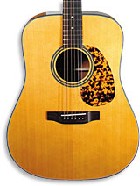One of the great ironies of blues music is that several of the “new” blues acts have by now sustained longer careers than legends like Little Walter, Otis Spann, or Freddie King ever had. Anson Funderburgh, who formed his group, the Rockets, in 1978, is now 50 years old. Legendary singer/harmonica player Sam Myers, now 68, joined him in ’86, forming one of the great bonds in blues history.
But after 10 albums, including one anthology, Funderburgh added a new voice to the band’s latest effort, namely his own. Which Way Is Texas? marks Anson’s singing debut, displaying some of the same hallmarks of his guitar playing, such as economy, taste, and soul. The logical place to begin our interview was with the question of what took him so long.
Vintage Guitar: You recorded nine albums before you decided to make your singing debut.
Anson Funderburgh: Yeah (laughs)! I’ve always sung, but I never did it publicly, because I had great singers working for me. I probably never would have sung on a record, but Rounder wanted to hear some demos of the songs we were going to do, and I’ve got a small studio in the house. Sam lives 20 miles from me, so it takes me 30 or 40 minutes to go get him, then 30 or 40 minutes to bring him back. Then take him home and the same drive back. So on some of the demos, my wife or I or John Street, my piano player, sang, because we wrote those songs. We shipped the demos off to Rounder, and they heard “One Woman I Need” and said, “Who the hell is singing that?” They really liked it, because it sounds kind of like an old soul song.
It’s that cross-pollination between soul and country, and you don’t sing like a blues singer.
Absolutely. I grew up in Plano [north of Dallas] watching Buck Owens on TV and “The Porter Wagoner Show,” “The Grand Ole Opry,” “The Bill Anderson Show.” There used to be a show out of Fort Worth called “Panther Hall,” which was a Saturday afternoon matinee to promo whoever was playing there that night. I saw Jerry Lee Lewis on that show, George Jones, Conway Twitty, Tony Douglas & The Shrimpers – anybody who was anybody.
When did you take up guitar?
I’ve got a picture of me with a little Roy Rogers guitar in 1957-which would have made me three. In grade school we used to have little talent shows, and you’d get to be onstage and play “Wine, Wine, Wine” and “Thunderbird” by the Nightcaps. They were huge around here, and Ray Sharpe, with “Linda Lu.” When I first started playing in nightclubs at 15, there was a dance people did called the push. It’s a slot dance they do to shuffles, and if you couldn’t play “Linda Lu” and “Honky Tonk” you couldn’t work.
Who are your biggest guitar influences?
Probably all the guys you could name have been an influence on me – from Don Rich with his silver-glitter Telecaster in Buck Owens’ band to Billy Butler, who played on “Honky Tonk” by Bill Doggett. B.B. and Freddie probably more than Albert King, for me – although I love him, too; don’t get me wrong. Then all the guys who played behind harmonicas, like Robert Junior Lockwood, and Louis and David Myers. Also, Luther Tucker, Magic Sam, Otis Rush, Albert Collins, early Buddy Guy. Jimmy Reed and Eddie Taylor were big influences on my rhythm playing. The first thing I ever learned to play on guitar was that Jimmy Reed “Honky Tonk” rhythm/bass line type of thing. I’ve always been a fan of older jazz – a little more partial to Kenny Burrell, Barney Kessel, and [organist] Jimmy Smith. The kind of jazz that kind of leans more towards blues; I understand it a little better.
Was your main guitar always a Stratocaster?
The first good guitar I ever had was a Telecaster. I played a Gibson ES-330 for a while, then a 335, and after that I got a Strat. I’ve been with them ever since. I bought my old ’57 Strat from a guy that bought it brand new in 1957 – so I’m the second owner. I took my dad to the bank so he could co-sign a loan for me, and I paid $900 for that guitar, which was top dollar in 1975 or ’76. My dad looked at that guitar and said, “Don’t you think you’d be a whole lot happier with a new one?”
Chad Underwood made me a parts Strat that looks a lot like my ’57, and Seymour Duncan made the pickups to the same reading as the pickups in my ’57 – they sound really good. I’ve also got an old blond ES-300 and an early-’50s ES-5, which I record with a lot. The amp I use now is a Doctor Z, the MAZ 38 Invasion. On most of my records lately, it’s a cross between the Doctor Z and my main Super Reverb, which is probably a ’64.
Having a blues band for 26 years, how do you keep things fresh and avoid the “generic blues” trap that a lot of bands fall into?
I think what hurts a lot of these blues bands is they think, “Yeah, everybody can play three chords.” But to have a good enough musical ear to be able to hear good parts, that’s always a challenge. And trying to write good, current material – Earl King was the best at that – and make quality records, not cutting every damn corner that you can and just throwing something out there. I’m not saying we always make it, but we’re still striving to do that. Stuart Sullivan has engineered my last three records, and I won’t use anyone else if I can help it. That’s part of the problem: Not to be overly critical, but a lot of blues records coming out don’t sound very good.
Sam and I have been playing together long enough, I hope when people turn on the radio and hear one of our songs they say, “That sounds like Anson & The Rockets with Sam Myers.” I think that’s what everybody strives for. And we’re also still striving to gain new fans and turn more people on to this kind of music, and let people know who Sam Myers is, or Snooky Pryor, or who Elmore James was. It’s a struggle just to try to make a living playing this music now – just the business end of it, getting your stuff in the stores. There are more challenges now than in the late ’80s and early ’90s. Robert Cray and Stevie Ray and the T-Birds were big, and it was an easier time to get things played. It seemed like it was a growing time for blues, and since the late ’90s or so there aren’t a lot of young kids getting into the blues, for some reason or another. What a crazy business we’ve chosen for ourselves. You do it because you love it. When I get too down about it, I watch Sam get in and out of that bus, at 68, and I think, “If he can do it, I can too.” I truly love him; he’s family. And I couldn’t have done it without him.
Photo: Bill Archer.
This article originally appeared in VG‘s Dec. ’04 issue. All copyrights are by the author and Vintage Guitar magazine. Unauthorized replication or use is strictly prohibited.
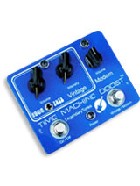

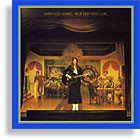
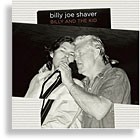

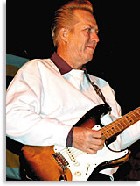
.jpg)
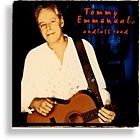

 The idea of making “presentation- grade” guitars – special instruments meant as much for marketing as for rich customers – probably goes back to the beginnings of guitarmaking.
The idea of making “presentation- grade” guitars – special instruments meant as much for marketing as for rich customers – probably goes back to the beginnings of guitarmaking. 

